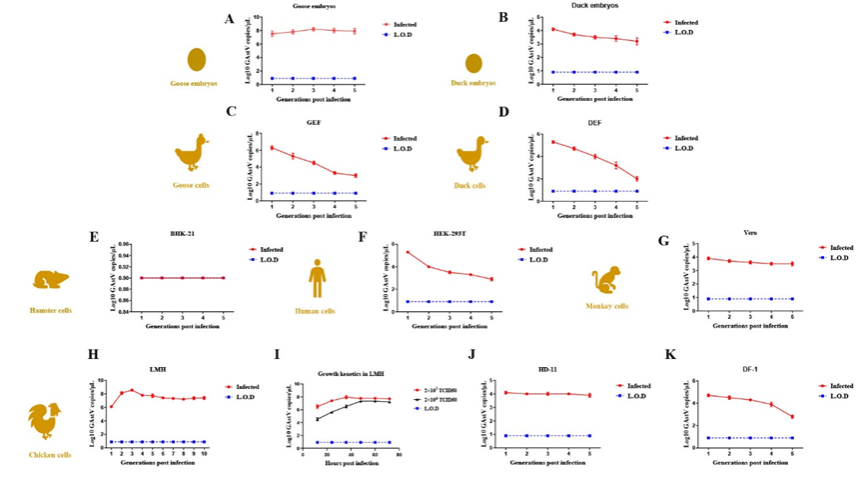Geese are important species in Chinese poultry farming industry. However, in recent years, a new epidemic waterfowl virus named as Goose Astrovirus (GAstV) has emerged among goslings, posing a serious threat to their health and causing high mortality rates. GAstV is widespread in many regions of China, with a severe outbreak occurring in Guanghan District, Deyang City, Sichuan Province. This outbreak resulted in a large number of gosling deaths. Therefore, it has become crucial to study the molecular characteristics of GAstV and establish infection models.

This study successfully isolated a virulent strain of GAstV named SCG3, which exhibits very high mortality rates in goose embryos and goslings, reaching 80% and 93.1% respectively. Additionally, researchers utilized histopathology and immunohistochemistry techniques to investigate the tissue tropism and distribution of GAstV SCG3 in deceased goslings. The study revealed that GAstV SCG3 belongs to GAstV genotype-2, showing an astonishing 98% homology with the published AHAU5 sequence. Furthermore, the research indicated that GAstV SCG3 only exhibits efficient replication in goose embryos and LMH cells, while not showing significant virus replication in seven other avian and mammalian cells. Particularly noteworthy is that, unlike the commonly assumed mortality rate of 20%-50% for GAstV, this study reports a GAstV strain with such a high mortality rate for the first time.
This study successfully isolated a highly virulent GAstV strain SCG3, which holds significant importance for exploring the pathogenic mechanisms and preventive measures of GAstV. Additionally, the study systematically established infection models of GAstV SCG3 in vitro and in vivo, providing a reference basis for further research on GAstV.
The related research findings were published under the title "Molecular characterization of a virulent goose astrovirus genotype-2 with high mortality in vitro and in vivo" in "Poultry Science" (DOI: 10.1016/j.psj.2024.103585).
Article Link: https://doi.org/10.1016/j.psj.2024.103585.

